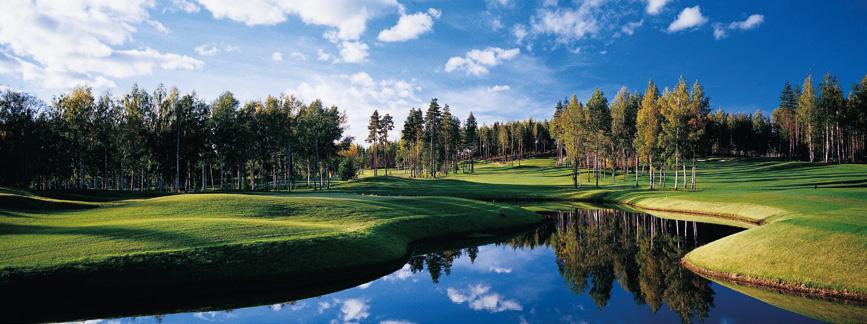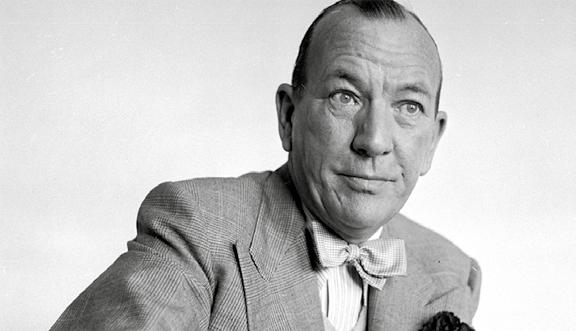
7 minute read
Midnight Finish
Golf
Dermot Gilleece observes the colourful and eccentric golf history of a Nordic nation
Finland’s splendid Linna course, about 100 kilometres north of Helsinki.
Midnight Finnish!
Every sane golfer knows that their great game was invented by Cuchulain up there in the Cooley Mountains all those years ago. Then the Romans tried to claim it for themselves, along with the Dutch and, of course, those inferior celts from north of Hardian’s Wall, the most brazen copyists of all. Now, it emerges that the Finns, of all people, also attempted to get in on the act.
Apparently it’s not enough that Mikko Ilonen should have wiped the eyes of our brave amateurs by capturing the West of Ireland title at Enniscrone in 1999, only to return 15 years later to win the Irish Professional Open, no less, at Fota Island. Just think of it, in every club he visits, the bold Mikko will be able to boast a double that only elite Irish practitioners such as Padraig Harrington, Rory McIlroy and Shane Lowry have managed to achieve.
As it happens, a popular story around golfing circles in Helsinki, concerns two young reindeer herders, Paarvi Tuulvitskoog and Olaaferinn ‘Ollie’ Ruukinaanaluu, who took to batting around a frozen herring with a finely polished antler. The idea was to see which of them could slide the slippery kipper into a far-off, empty vodka bottle in the fewest number of strokes.
They called their game ‘paar en fisken’, which means hit the fish. Or ‘paar’ for short. When the lads discovered that the Scots had been playing a similar game for some centuries past, however, they immediately sold their animals and moved to Glasgow where they became besotted with the royal and ancient pursuit.
The upshot of this episode was that paar, or golf as it soon became known, found a permanent and revered place in Finnish sports consciousness. Indeed it led to the founding of the Helsinki Golf Club in 1932. A likely story, I hear you mutter. Whatever the truth of these antler-waving antics, golf in Finland can have a fascinating side to it. One of the most intriguing of its 160 courses is the Green Zone GC, located directly on the border with Sweden. The result is that roughly half the holes are in either country.
As Noel Coward might have observed, mad golfers in Finland go out in the midnight sun. And this was July 12th, about a month later than the ideal time of year for such an exercise.

that the short sixth hole actually traverses the international boundary and time-zone. Which means that your fourball could tee off in Finland at 12.50pm and putt out in Sweden at noon.
Having visited the scene of midnight golf on a trip to Reykjavik for the European Junior Championship in July 1981, I was delighted to be given the opportunity of actually playing in such conditions, 26 years later. That was when I found myself looking down the fairway of my final hole into gathering gloom.
It was still possible to make out the desirable landing area for a drive, between bunkers right and left, about 220 yards away. Further into the distance, cars with their headlights on were approaching from the clubhouse area, down a road skirting the left-hand side of the fairway. On the right was Lake Katuma, which is frozen from mid-December until late March. Now, its gently-lapping waters were accompanied by birdsong. At eventide? Well, that would be stretching things insofar as my watch told me it was now 11.50pm. By the time I reached the green, it would be the witching hour on Finland’s splendid Linna course, about 100 kilometres north of Helsinki.
Apparently it’s not enough that Mikko Ilonen should have wiped the eyes of our brave amateurs by capturing the West of Ireland title at Enniscrone in 1999, only to return 15 years later to win the Irish Professional Open.

As Noel Coward might have observed, mad golfers in Finland go out in the midnight sun. And this was July 12th, about a month later than the ideal time of year for such an exercise.
Over recent decades, Scandinavians have become increasingly interested in Irish golf. Now, Finnish players such as Illonen want to reverse the process. Prior to Covid-19 and its impact on air travel, Linna, near Hameenlinna and within easy reach of Helsinki Airport, was accessible through a variety of airlines including SAS, Finnair and British Airways. Ryanair flew into Tampere Airport, 80 kilometres away. Flights by Aer Lingus directly from Dublin, commenced in October 2007.
As the only Irishman in that group from 13 years ago, I wasn’t surprised to find myself assigned to the Ballybunion Suite in the Linna clubhouse, which also boasts the Oakmont, Muirfield and Carnoustie suites. A sauna attached to the bathroom was a reminder of the local lifestyle. The course, which stretched to a muscular 7,244 yards off the back tees, followed an undulating route through plentiful birch and pine trees. As we set off at 7.0pm, Pekka, our Finnish guide, confessed to being apprehensive about the weather, having just endured three days of torrential rain. He needn’t have worried. It was a glorious evening, prompting him to conclude that if doctors diagnosed with the same accuracy as meteorologists, half their patients would be dead.
Among his stories was an almost inevitable reference to Finland’s most celebrated composer, Sibelius, who apparently lived part of his life in the Linna area and was inspired to compose his best-known opus, Finlandia, while looking over the countryside from a viewing tower in Aulanko, about a 10-minute drive away.
Linna, where Ilonen was the touring professional, represented an overall investment of €14.5 million, which would be considered decidedly modest by Irish standards. Incidentally, the developers had to establish, through the absence of animal droppings in the winter snow, that the area did not have any flying squirrels, an endangered species unique to Finland.
Why the interest in Irish tourists? ‘If someone had asked me that question three years ago, I wouldn’t have had an answer,’ replied Petri Peltoniemi, managing director of Linna Golf. ‘But we’ve since had hundreds of Irish people here. We wouldn’t dream of trying to compete with the Algarve or the Costa del Sol in numbers, but a big attraction, as you’ve discovered, is that you can start golf at 7.0 in the evening and finish your round. And you can still play until 10 in the evening in September.’ He went on: ‘You get a lot of Finnish visitors to Ireland because we like your people. Our way of living is very close to the Irish. Like you, we have a friendly country. That is also what we’re trying to sell.’
Five minutes’ walk away was the four-star Vanajan Linna Hotel, a former hunting lodge were golf packages of bed and breakfast and a greenfee, were a very modest €130. Generally, the price of golf was very competitive by Irish standards and I was informed that the target months were June, July and August, when the weather is generally at its most appealing.
Of the courses within a 30-minute drive of the hotel, the 36-hole Kytaja development overlooking Lake Kytaja, was especially impressive. With a golf season squeezed into six months from May until October, the Finns faced a difficult battle in promoting the game among their own people, much less in attracting tourists. Still, I remember silently admiring the efforts of a country which once had the courage to go to war with its mighty, Russian neighbours.
Finland’s 9 hole Arctic Club

Finally, it would be a serious omission to talk of golf in Finland without mentioning the nine-hole Arctic Club. Though it wasn’t on my itinerary, I was assured that it was well worth the trip inside the arctic circle, as the name suggests.
Down in Enniscrone back in 1999, I remember talking with Mikko Korhonen, an 18-year-old from Helsinki, who lost to Garth McGimpsey in the opening round of the West of Ireland. In the course of our chat, he enthused: ‘In the middle of June, the light is good enough to play 72 holes in one day, which I have done.’










